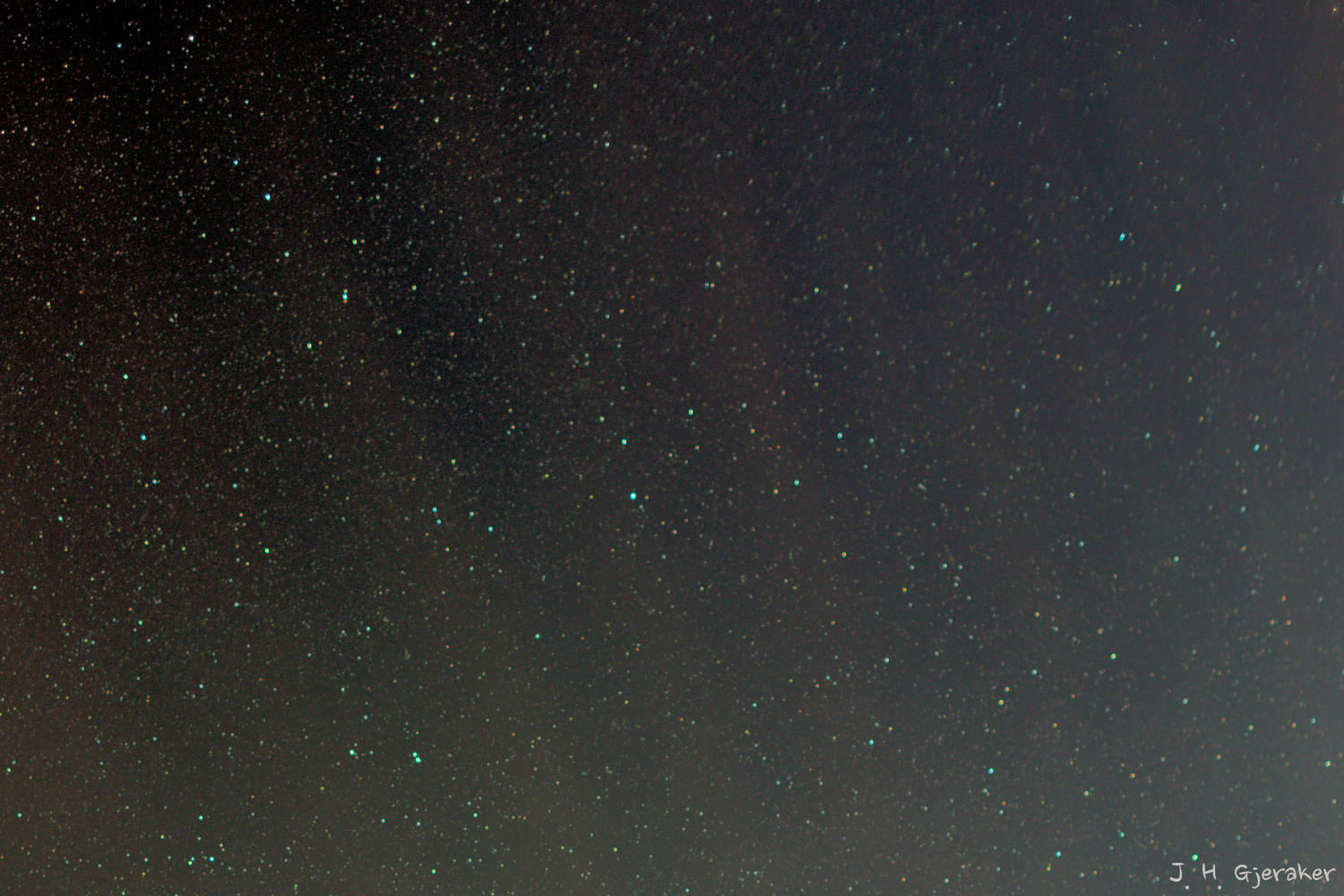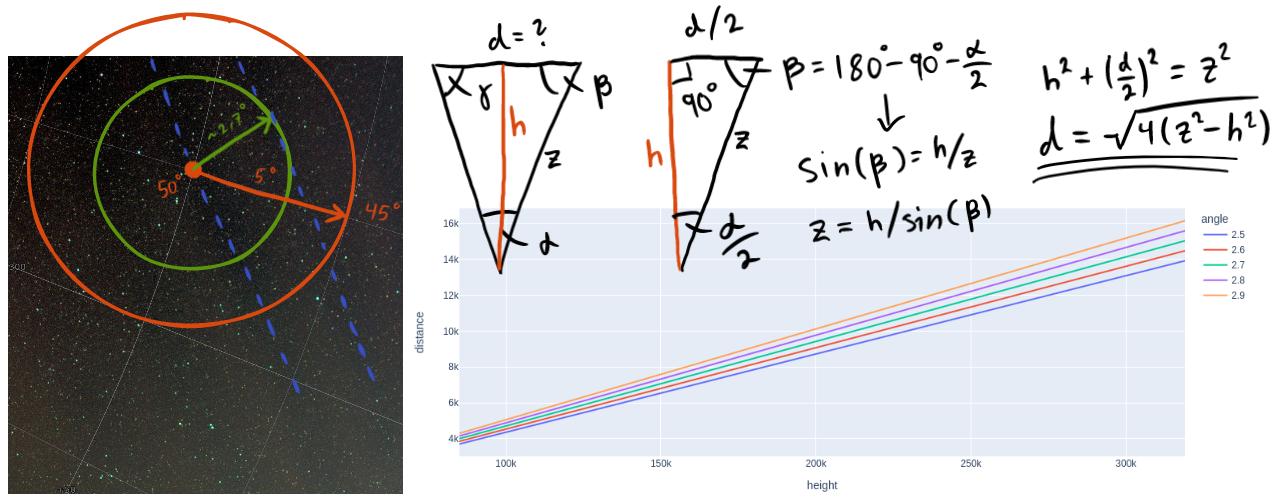2023-02-18 Atmospheric Gravity Waves
What on (or above) Earth did I capture here?

These are likely(?) gravity waves, a photogenic phenomenon caused by disturbances in the airglow.
Heard none of these words before? Me neither. This striking pattern was hiding in plain sight and only showed up after post-processing a 5-minute exposure. I thought my camera was dying on me.
After a few hours of interesting reading, I'm somewhat confident that these are in fact atmospheric gravity waves, and I thought I'd do a quick summary of my findings here. Note that I might be completely wrong. This is just an educated guess from an interested observer trying to describe his observations.
Theory Lightning Round
There are several factors at play in producing these beautiful waves. Here's a surface-level overview.
Airglow
Light pollution, every astrophotographer's worst enemy, is characterized by ground-based light sources being reflected back to Earth by the atmosphere. This is not that, but the effects are similar.
Atmospheric airglow is a layer of light emissions caused by chemical reactions high in the Earth's atmosphere. It is omnipresent, but only directly visible during nighttime. The result is an atmosphere that is never completely dark, even after correcting for the effects of starlight or diffused sunlight. [6,7]

The colors produced vary by altitude, ranging from a blueish green from the troposphere and stratosphere towards reddish and UV as it transitions up into the thermosphere at altitudes higher than 160km. [1,6]
Note that this is unrelated to the aurora which has a relationship with the Earth's magnetism and sunspot activity. Airglow is a contained phenomenon that originates with self-illuminated gases. [7]
Gravity Waves
I found this great quote that neatly describes what gravity waves are.
Drop a stone into a pool of water. The spreading ripples are Gravity Waves. [3]
In slightly more scientific terms, gravity waves are a type of mechanical waves that are generated inside a fluid, where gravity or buoyancy acts as the restoring force. [2,3,4,5]
Note that these are not to be confused with gravitational waves related to Einstein and LIGO.
Atmospheric Gravity Waves
Weather is chaos, and there are several weather phenomena that may produce gravity waves in the atmosphere, but they usually originate far below in the troposphere. From thunderstorms to jet stream shear, or solar radiation to wind across mountainous terrain, these are just some of the likely candidates. [3,8]
Once present, they actively transfer energy and momentum from the troposphere to the middle and upper atmosphere as they propagate both vertically and horizontally. Their wavelengths can be thousands of kilometers, their period from a few minutes to days. [3,5,8]
In Combination
Gravity waves in the atmosphere can often be seen in the lower atmosphere (~10km) by thin bands of clouds. However, on clear and moonless nights, their interaction with airglow can be indirectly seen higher in the atmosphere as it manifests as colorful bands in the airglow depending on altitude.
Calculating the Wavelength
If we entertain the idea that these are atmospheric gravity waves, it would be interesting to know the wavelength. To get a better view of the pattern I rotated the image and pulled the average value per channel, resulting in the plot shown below.
Both the red and green channels show a clear pattern, though red is by far the strongest. We can source from theory that green airglow is produced either lower in the stratosphere or above 80km, whereas red is mostly above green at 160km and above. [1]
Since the waves are present in both red and green we can assume that the visible waves are at higher altitudes in the range 80km to 320km. Knowing this we have enough information to do some back-of-the-envelope trigonometry and calculate the wave trough-to-trough distance, as shown in the scribble below. The coordinate overlay generated using nova.astrometry.net/ allowed me to roughly estimate the angle between crests.

If my calculations are not completely wrong we got a whole range of possible wavelengths here depending on the actual height. If we further assume a height of ~200km, just above the transition from green to red, we get a wavelength of 9-10km, which is plausible according to theory. [2,3]
In Summary
Whether or not I'm correct about these being atmospheric gravity waves or not, this was a fun exercise. It's always interesting to encounter some phenomenon that is not immediately explainable, and you have to dig into it a little bit to make sense of it. You learn something new every day.
Sources
- https://en.wikipedia.org/wiki/Airglow
- https://folk.ntnu.no/espy/Second/Master_Student_Resources/Previous_MSc_Theses_and_Presentations/MSc%20Theses/Karoline_masteroppgaveR.pdf
- https://atoptics.co.uk/highsky/hgrav.htm/
- http://sprg.ssl.berkeley.edu/atmos/gj_science.html
- https://www.pnas.org/doi/abs/10.1073/pnas.1508084112
- https://www.miguelclaro.com/wp/portfolio/rainbow-bands-of-airglow-in-gravity-waves-above-pico-island/
- https://en.wikipedia.org/wiki/Airglow
- http://sprg.ssl.berkeley.edu/atmos/gj_science.html